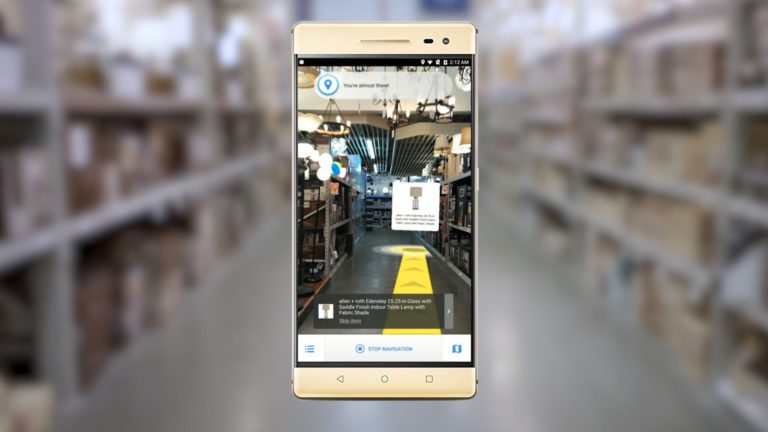
XR Talks is a weekly series that features the best presentations and educational videos from the XR universe. It includes embedded video, as well as narrative analysis and top takeaways. Speakers’ opinions are their own.
How is AR (and VR for that matter) developing as a retail shopping tool? And how are retailers and brands executing apps and campaigns? The answer is slowly… but they’re on the right path according to a panel at AWE. Following Part I of this series on Walmart, the full video is below.
First, where does AR work best in retail contexts, and what use cases are materializing? According to Transformation Group’s Irena Cronin, it’s proving useful where there are large items or sku-intensive categories with lots of variability and product attributes (size, color, texture, etc.).
“It’s objects that have some kind of texture or size that [users] want to measure to fit somewhere, and that could also be on their body,” she said. “This is a way of adding more information. Not only that, but to go through with the purchase right after [makes it] extremely good for utility.”

It also works wherever there are consumer pain points like sizing and fitting, said Media Monks’ Kelly Kandle. The primary goal is utility she says, but there’s also an entertainment or brand marketing angle — showing once again AR can occupy the full height of the purchase funnel.
“There’s kind of that x-factor of bringing in brand ethos and style,” she said. “Lacoste has a great AR app which is trying on shoes, but surrounding that is the whole experience of different graphics which is aligned with their style guide. So I think it’s kind of in those two buckets.”
AR also has theoretical benefits when it comes to generational affinities. Not only will Generation Z be “XR-natives,” but they already show signs of wanting things that are much more tangible and visual. That translates to visually immersive brand exposure versus traditional marketing-speak.
“Eighty percent of Millennials will not see a new home unless there’s a virtual tour,” said Build.com’s Dave Nickens. “With Gen Z, it’s going from ‘tell me’ to ‘show me.’ No one’s going to read manuals unless you bring that manual to life. Don’t tell me about it… let me experience it.”

Beyond where AR works in retail and brand marketing, what about where it doesn’t work? Kandle warns against half-hearted, under-budgeted AR activations; or those that are done just for the sake of doing something in AR. This ends up being ineffective at best and damaging at worst.
“For me, as I work with brands and agencies, the projects that don’t work well is when there’s not a real reason for it,” she said. “Or there’s not a budget and you’re just doing it for the sake of checking that box that ‘we did an AR project.’ I think those are the ones that kind of fall flat.”
As we’ve examined, the execution not only needs to be native, but also the metrics. Just like in the smartphone era, the ad world tends to apply comfortable/legacy metrics to emerging media (think: clicks and impressions). These measurements will fail to capture AR’s true value.
“With immersive technology, everyone’s going to ask for the ROI,” said You Are Here Labs’ futurist and XR marketing guru, Kathy Hackl. “Do we need to create new metrics… something like return on engagement or whatever that would translate to? There’s definitely going to be new metrics.”

As for the all important question of “when?” AR in retail will take a while to get off the ground. But positive macro factors include 5G and Moore’s Law says Nickens. These will bring us closer to the connectivity and cost/size/energy requirements for retail AR’s true endgame: glasses.
“In 2020 if Apple comes out with their headset or glasses… then you need about a year of people buying the headsets,” said Cronin. “Then you have these companies out there developing for it so they’ll be ready. So I think maybe in 2021 or 2022, you’ll really get to see this happen.”
For deeper XR data and intelligence, join ARtillry PRO and subscribe to the free ARtillry Weekly newsletter.
Disclosure: ARtillry has no financial stake in the companies mentioned in this post, nor received payment for its production. Disclosure and ethics policy can be seen here.
Header image credit: Lowes
